On Saturday 17 October I gave a keynote presentation as part of the Thinking Dance Symposium at Leeds Beckett University. The following is a version of the presentation.
This morning I’m going to talk about two things and how they might relate to choreographic making: friendship and attention. My thinking and playing with these ideas has also meant I’ve started to become curious about principles of contemporary — as in of this day — choreographic processes; and I’ll get to these later.
I’m also going to talk about the work I do with Igor Urzelai and Moreno Solinas. This presentation has come from conversations with them, and by reflecting on the work we do together. To attempt to respect these conversations, I have included video clips of Igor and Moreno talking about their and our work. These were recorded during a development period in Sardinia last month, and I hope that they might help to illustrate, contradict, distract, enrich, complicate, or simplify what I have to say.
Here’s an example:
I don’t think this presentation is about dance dramaturgy in general. Rather, it is a reflection on some things I’ve noticed about the way Igor and Moreno work, the role I may or may not have played in that work, and how this might be useful for people interested in choreographic processes and how they — the processes that is — are changing and/or developing. It is framed by the performance work many of you saw last night: A Room For All Our Tomorrows.
The thing I understand about my role as a dramaturge for Igor and Moreno is that it’s not about me. I think I forget this quite a lot. I am, in many respects, a servant. My work is to serve their needs and interests in the development of a performance work. But I also have tastes, ideas, preferences, and habits, and these — at various times — have the potential to hinder and/or help.
The simplest of questions might be, How might my actions and attention support these people to develop the work they seem to want to make?
In an academic context this idea (that of excluding the self) is, of course, a bit bizarre. Academia is increasingly a celebration of the self: what are my outcomes? (and woe betide if they aren’t 3* or better). Who is first author? What is my contribution? And keynotes themselves are an important part of that world of building esteem. How on earth can my notes be key when I want to be clear that my work with Igor and Moreno is to attempt stay out of the way so that they might develop the work they want to make. (Sorry to repeat myself). This would be an ideal time to stop talking. To quit before I’ve really started. To pull out from the keynote-ness of this keynote. To make it clear to you that I am not an expert in dramaturgy.
In other words — and I don’t mean this as an apology — I am a dramaturgical dilettante.
And I’d love for this to be the case:
Dilettantes are those who ask questions beyond the specialist truth about the medium
– Bojana Cvejić1
I’m not sure what I’ve been saying is completely honest. If I were you I’d deeply mistrust anyone who claims that “it’s not about me” or “I am a servant”. Really? As for staying out of the way, perhaps a better word here is need. I don’t think I’m needed. Igor and Moreno have been — and would be — utterly fine without my interventions and prodding. Dramaturg Hildegard de Vuyst says it like this:
I feel that it works best when I’m not really needed somehow, when I’m not the embodiment of something that is missing. Because if feels like if I’m not necessary in fact then I have a sort of freedom and a playground to stand on.
– Hildegard de Vuyst, cited in deLahunta2
And here is Cvejić again:
It’s important that the dramaturg doesn’t enter the process because the process is in need of a dramaturg; [productive] problems can be created only out of desire without need, duty or obligation.
Here she is:
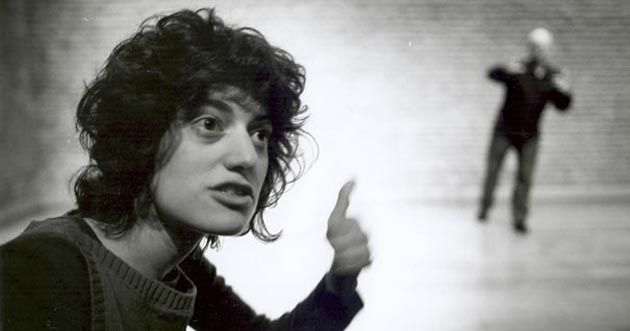
By the way, I really like seeing images of people who are being quoted or cited. I stole this idea from a Roehampton MRes Choreography and Performance graduate called Hamish MacPherson.

I recommend his work: hamishmacpherson.co.uk
What then do I do with these two — Igor and Moreno — and how might this serve you as people interested in ideas, in choreographic practices and processes, and in helping to continue to generate conversations, texts, and questions about choreographic practice in these teenage years of the 21st century?
I’ll begin with a sports metaphor of sorts; it involves baseball umpires.
I would really like to think that my practice as a choreographer — and indeed dramaturg — involves for the most part the stance of the second umpire. I’ve written a lot about this ’call ’em as they are’ in relation to delusion and choreography. Here’s a wee taste.
The difficulty I encounter most often — as viewer, maker, dancer and teacher — is one that might be thought of as a kind of delusion. Creating any object, activity, performance or choreography inevitably involves an encounter with desire. We want things to happen in particular ways, and often we want these to be experienced by others in equally particular ways. Dance’s preoccupation with the word intention points to this desire to create art works that in some ways reflect the things we are attempting to express. The ‘delusion’ occurs when I replace what is actually happening in the studio or on the stage with what I imagine (or want) to be happening. 4
Yes, quoting one’s self, the moment that that “this is not about me” preamble is definitely proved to be a lie.
Some years ago, a student I used to work with suggested that my mantra is this: What is there?“
I think this is an important question for choreographers to constantly test themselves against. The capacity to project our desires on [choreography] is strong, and it requires robust self-esteem to become aware of the disparity between what one wants to see … and what is actually going on.5
I hope to stop quoting myself now. It’s far too early in the morning for such public displays of ambition.
Before I finally arrive at friendship and attention, I’d like to dip into audiences.
It’s important to talk about audiences because there is this thing that is said about dramaturgs that they are the “first audience”6. It seems related to the idea of the dramaturg as being the all seeing, knowing, powerful outside or external eye, something André Lepecki refers to as an “anatomical monstrosity”7.
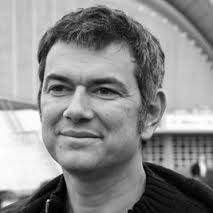
Lepecki evokes Walter Benjamin and suggests that the “power of art is precisely because it’s not made for the audience and therefore the questions of interpretation or explanation are problematized”8. He describes the audience — and I love this turn of phrase — as being “absolutely vague”9.
Elsewhere, Colin Poole and I have written of audiences like this:
These others — audiences — are ghostly figures, absent from the day-to-day of the collaboration, but we are always aware of them, we hear their voices, we marvel at their intelligence and curiosity, and yet we do not know who they are. Through their imaginations and ours, we are collaborating with ghosts10.
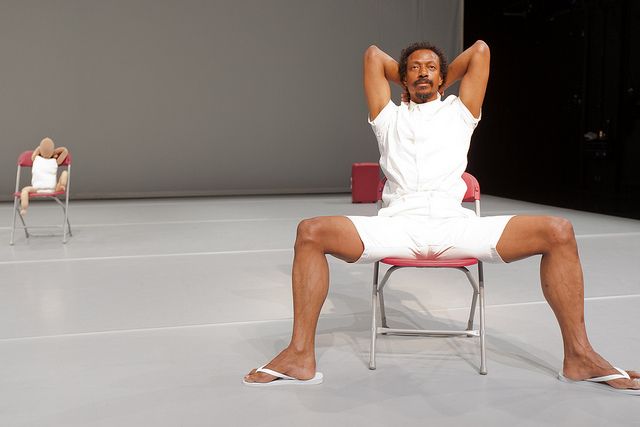
Understanding or predicting our relationships to and with audiences can, of course, become very absurd very quickly. Two weeks ago, at the London première of A Room For All Our Tomorrows, my experience as an audience member was altered by, first, a person next to me who had a rather distracted and troubling presence, and second, a small piece of food caught between my teeth.

How is it possible to ever bother to worry about audiences when we are making work?
Nevertheless, Igor and Moreno seem to care very deeply about how audiences experience their work. Together we’ve talked about Eugenio Barba’s description of how the more difficult it is for an audience “to interpret or immediately judge the meaning” of what is happening, the stronger is the “experience of the experience”11.
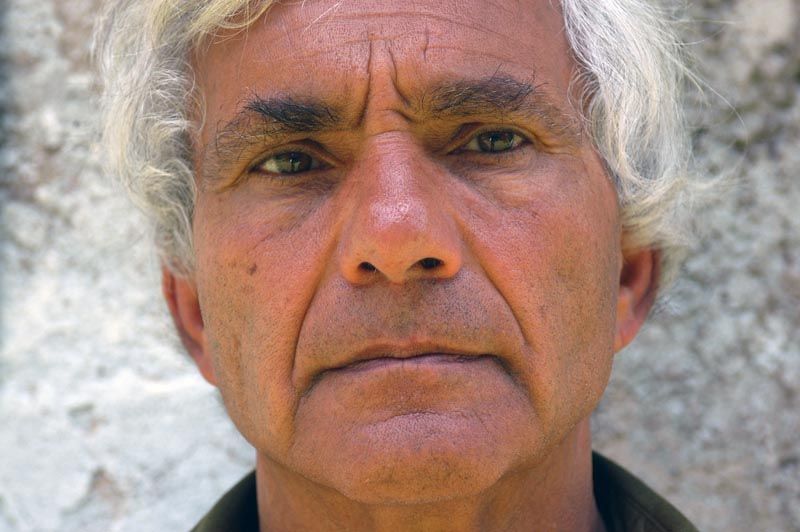
If performance studies — speaking rather provocatively — is guilty of being the third baseball umpire (“They ain’t nothin’ till I call ’em.”), what is becoming clear to me is that in my work — both as choreographer and dramaturg — it’s far more the case of the first umpire, and I think I’m OK with this:
I call ’em as I see ’em.
Within this statement I recognise my biases, privileges, training and flaws, and the profound limitations of my capacity to perceive and attend to what is happening. At the same time I see it as a kind of call to arms: how might I notice what is happening? How informed might I become? How might I become more aware of my blind-spots?
Perhaps what we should concentrate on is becoming comfortable with not understanding everything that is going on. Perhaps we should be comfortable with not seeing everything. After all, the beginning of knowledge is not knowing12.
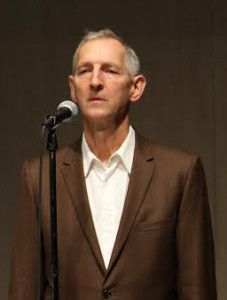
One of the pleasures of doing presentations is in getting to read and reread new and not so new materials. It had been some time since I’d read Bojana Cvejić’s 2010 article, The Ignorant Dramaturg 13. So long in fact that I’d forgotten that in it she talks about dramaturgy in relationship to friendship. It’s a fantastic bit of writing, and takes plenty of provocative pot-shots at the conventions of dramaturgy in dance. Actually, I was a little tempted just to read it out this morning and try and pass it off as my own. We all have a little bit of the plagiarising imposter in us. Instead, as I was reading I was highlighting like how I used to highlight as a first year undergrad. And highlighting. And highlighting.
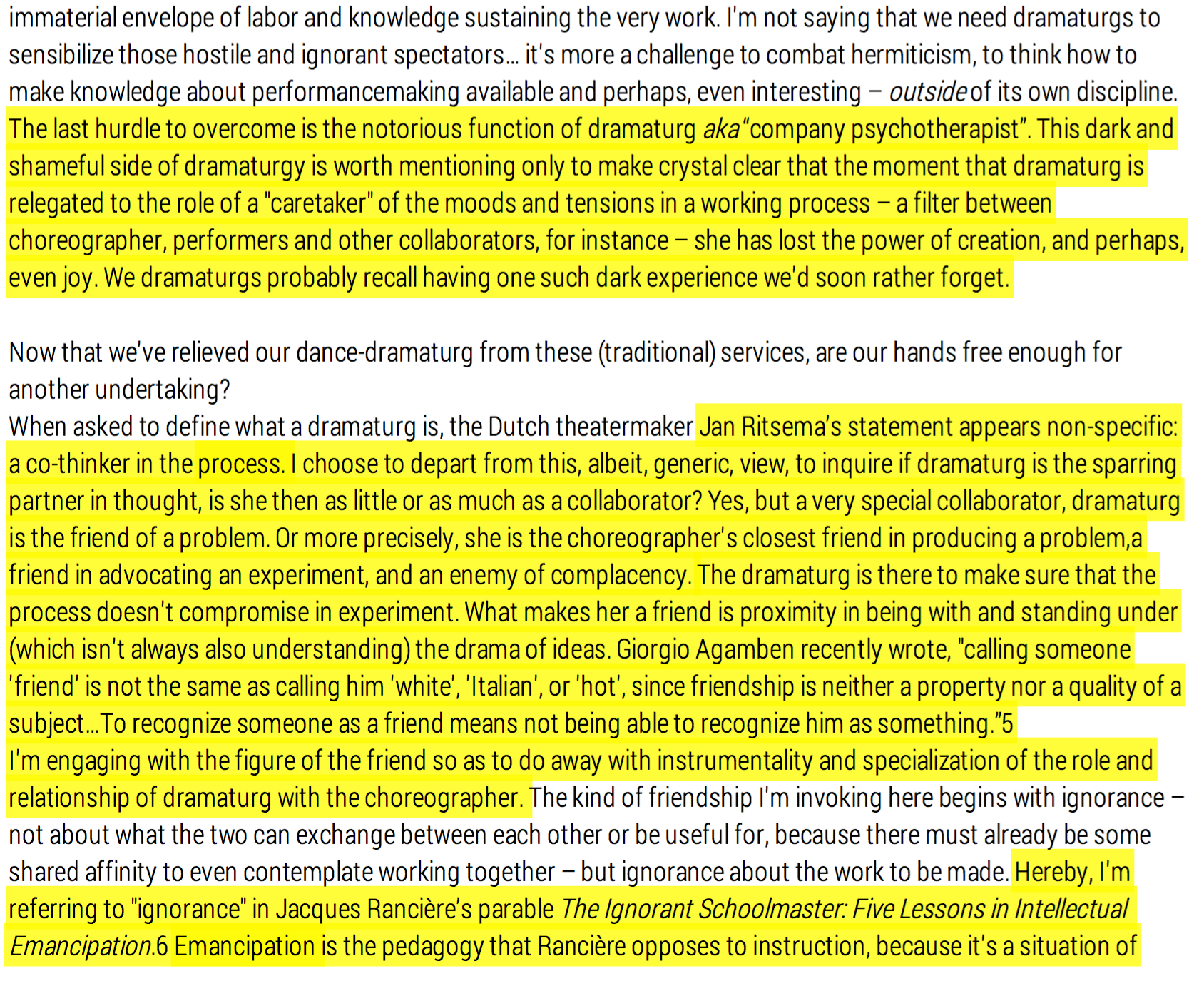
For those of you who haven’t read Cvejić’s article, here’s a brief synopsis:
She goes on:
As I say, it’s worth every word.
I’d like to pick up on Cvejić’s understanding of friendship in relation to my own experiences watching — and working with — Igor and Moreno. Cvejić manoeuvres friendship into her discussion as a way of circumventing the conventional utility of the role of dramaturg for choreographers. Citing Giorgio Agamben, she suggests that we call someone a friend when we are not able to recognise them as something. In other words, the dramaturg-as-friend is just that because the dramaturg is not recognisable as any thing in particular.
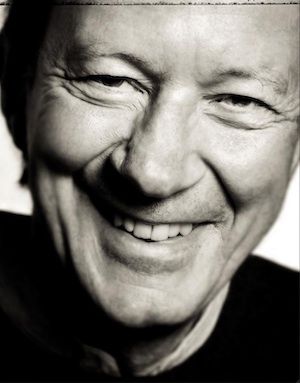
Agamben goes further:
the friend is not another I … and at the point at which I perceive my existence as pleasant, my perception is traversed by a concurrent perception that dislocates it and deports it towards the friend, towards the other self”14.
Agamben’s words are not best spoken — that is, they are better on the page — but even just the poetics of his thinking: of the point of perceiving one’s existence as pleasant; and a dislocation of the self towards the friend (or other self); even these alone are tantalising in how the spaces and work between dramaturg and choreographer (or choreographers) are intimate, profoundly personal, tied to identity, and productively prone to friction and dislocation.
Friendship is remarkably open-ended, unlike “institutions of belonging”15 like marriage or work. As such, friendship is characterized by ambiguity, and although this makes friendship resistant to definition, philosopher Mark Vernon suggests this is appropriate because:
mistaking relationships for what they are not — that is being blind to their ambiguity — [is] arguably the greatest cause of disappointment and failure 16.
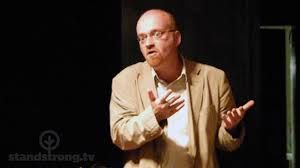
The declaration of friendship, however, is wired to exclusion and involves valuing difference over commonality. Friendship ought to force us to confront difference and change. Friends “guide us into becoming one kind of person rather than another” 17 (or perhaps making one kind of work rather than another).
How might these ideas be useful in thinking about dramaturgical and choreographic processes?
Here’s a bit of writing I did whilst watching Igor and Moreno rehearse A Room For All Our Tomorrows on 17 September this year in Sardinia:
I am watching Igor and Moreno disagree — maybe even bicker — as they struggle to sort out a particular transition in the work. They are tired, and each of them, at different times, wants something to happen at a different time and in a different way. Igor turns to me and asks if anyone has written about how collaborating really slows things down. We laugh. I think they are making a mistake with this transition and it’s not clear to me that their current solution is just that; rather it appears to be a solution that has created other (more serious) problems. I am torn between wanting to express a very direct opinion and feeling that now is not a good time for me to open my mouth. It’s a moment when navigating the experiences and feelings of these two trumps my primary purpose to serve the work. Or perhaps by supporting them (with my silence) I am also supporting the long-term strength of the work? It’s delicate.
I notice in this diary-like writing my falling into those tropes of dramaturgy that Cvejić mentions. But how am I to disregard the welfare and well-being of the people in the room (including myself)? These sensations are tied to the conditions of the spaces in which we are working, and these in turn directly influence material, physicality, perception and decisions. When is it best to speak up and who am I serving when I open my mouth? When to question, when to provide solutions?
In the room my third perspective on what is happening is just that. It’s a way of triangulating ideas, responses and experiences. The duality of two — the boolean yes no on off one zero — is complicated and stretched by a third partner. A friend of sorts. This is not to say that any one of us really knows what is happening. Yes, there’s a lot of experience in the room, and we are grappling with the problems at hand, but our differences have the capacity to generate wicked problems that might surface in a tasty way in the performances of the work.
Perhaps, though, in rehearsals for ARFAOT part of the struggle was in accepting that a profound sense of uncertainty or not knowing is able to continue beyond the performances of a work. That as our capacity to deal with complexity, multiplicity, and the shear difficulty of making work increases, so too does the likelihood that we are not able to clearly articulate or make sense of decisions, responses and materials.
Like many dancers I’m curious about the nature of attention and how attention might be developed in various ways, in various contexts, and how it might make possible ideas, and help keep me open to what is going on in dance, practice, choreography, and life. And, indeed, how attention might relate to dramaturgical processes.
Simone Weil — political activist, christian mystic, meditative thinker, and philosopher, who died in 1943 at the age of 34 — wrote this of attention:
Attention is the rarest and purest form of generosity.
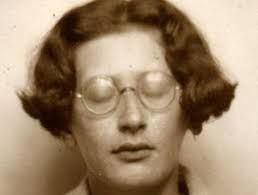
Of course, I’m ripping Weil’s words out of context; they are from her First and Last Notebooks 18 in which she discusses discipline, and the value of suffering. In Gravity and Grace 19 Weil compares attention with prayer, faith and love.
Attention as a form of generosity — and indeed love — appeals to my lack of cynicism, and in this morning’s context bridges attention with friendship. Attention is not collusion; it affords difference, care and friction, and certainly never compromise. It underpins the dislocation of the self and the other self-as-friend-as-dramaturg, just as we are perceiving pleasantness.
The deliberate and practiced sensitisation of our capacity for attention is vital in dramaturgical and choreographic processes.
Recently I was listening to a lecture by Australian inventor and engineer Saul Griffith about sustainability and climate change. He was speaking for an organisation called The Long Now Foundation about long-term infrastructure 20.
Not surprisingly, the lecture had nothing to do with choreography or dramaturgy, but it did prompt me to consider what the limits of our attention might be when we are making choreographic work. What needs to be put in place in order for choreographers to radically alter the temporal — and indeed spatial — frames under/through/by which we make work?
Our discipline is overwhelmingly comfortable with micro-scales; of narrowing our attention in order to notice the nuances of corporeal and kinaesthetic change: move that arm there, perhaps with less intensity, bring your gaze to just above her right temple …
This is familiar stuff to dance people, but how far out might one zoom in the process of making work? What if I were to look at — or assay — all of the work that is being made in the world at this point in time? Overwhelming. But, then, what about all the work that has been made, and all the work that will be made? I start to appreciate an economy of scale that is humbling and recognises the inconsequentiality of the work I do (with Igor and Moreno, and as an artist). I am personally interested in these impractical scales and what they might offer my capacity to notice.
This is not to forget that not only are we deeply involved in paying attention, and in practicing attention, but our choreographic work also means directing the attention of others. Here’s Barba again:
To create the life of a performance does not mean only interweaving its actions and tensions, but also the directing of the audience’s attention, its rhythms, inducing its tensions without trying to impose an interpretation21.
What is demanded, then, is the kind of closeness — and even care — that is born of intimacy and friendship with the work; the paradox being that in order to attend to different degrees of breadth and scale, I must look to be sensitive to microcosmic relationships, conversations, conditions, gestures and actions. When choreographer Lisa Nelson says that she is “watching change”22, I understand that this “requires the kind of communion that comes from knowing a place [or work] deeply, not just as scenery but also as sustenance” 23.
Attention consists of suspending our thought, leaving it detached, empty, and ready to be penetrated by the object; it means holding in our minds, within reach of that thought, but on a lower level and not in contact with, the diverse knowledge we have acquired, which we are forced to make use of 24
This is a little tangential, but I’d like to finish with a list. It is an attempt to consider some principles of choreographic practice. Actually, I don’t know about this, perhaps they are more attitudes, but in saying this I feel like I’m trying to cover my arse a bit.
I started to construct the list while watching Igor and Moreno work together. In order to make the list, the words 1) needed to fit any kind of choreographic making (including, say, conceptual performance or expanded choreographies); and 2) any choreographic methods (if such things exist) must be able to be derived or adapted from these principles. I imagine that this list is not exhaustive, and I hope it’s not too obvious. Perhaps it might — as we consider the nature of choreographic practices — help to provoke our questions, our processes, our methods and our choreographies.
It’s also in random order.
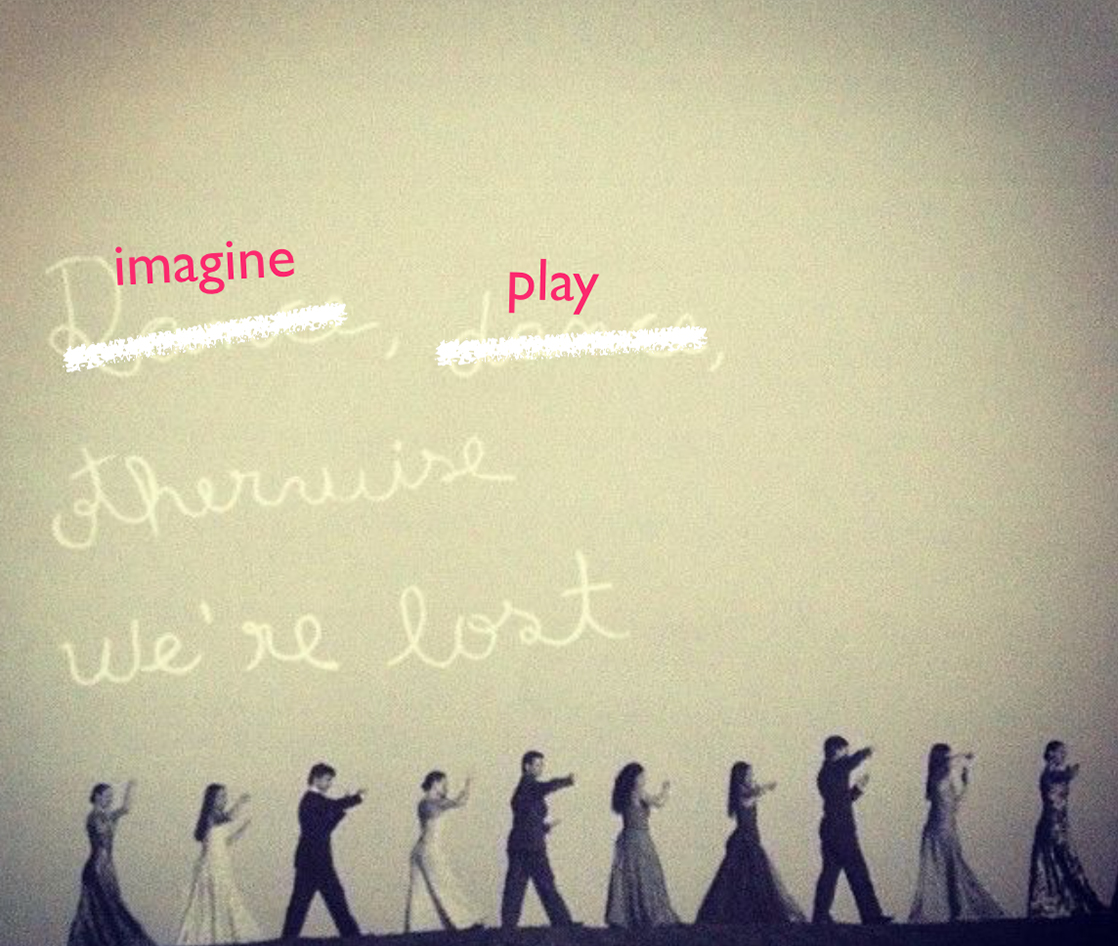
OK, I’ve just stopped writing and preparing this now, because I happened to go on Facebook and saw that Jonathan Burrows had posted a link to a keynote he had given just a few hours earlier today in Stockholm (it’s Wednesday 14 October).
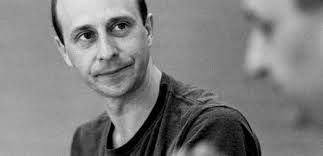
It’s (predictably and fabulously) inspiring, and I do not recommend reading someone else’s keynote (or any damn presentation) while trying to write your own, especially not Jonathan Burrows’. This is — or was — a stupidly bad idea. He said, amongst other things:
We keep staring at the past 50 years to reassure ourselves what we’re doing is new but as the artist Grayson Perry said about painting, since there is no new, you end up searching for a nuance, a tiny variation you can make your own, and most of the nuances are already taken 26.
I’m going to quote Daniel Dorling at length here. It’s from his book called Injustice: Why Social Inequality Persists that was published this year.

One scholar, Elvin Wyly, who was among the early group to document how sub-prime lending was unsustainable in the US, wrote of his writings recently that all he had done was to have ‘… gathered a posie of other men’s flowers, and only the thread that binds them is my own’. Even that phrase was not his own, he admitted. It was attributed to the title page of one of Peter Gould’s books on medical geography. Peter, in turn, was quoting from the title page of a book of poems collected during the Second World War, the author of which, in turn, was quoting from….
The earliest recorded version of the ‘posie’ acknowledgement dates from over 400 years ago, and reads: ‘I have here only made a nosegay of culled flowers, and have brought nothing of my own but the thread that ties them together.’ The only reason that this was the first recording is that printing had only just been invented then. The idea that we do little more than collect the flowers of others’ ideas and simply tie them together in slightly different ways will have begun with the first picking of flowers, long before it could be recorded on paper 28.
Clearly, this presentation is built on the ideas of others (if you hadn’t already noticed). I can make no claims to originality.
I’ll finish by saying that one of the problems with this list (of course) is that it seems to be so general that it would hold for any kind of making. But, then, how is choreographic making special at all? I don’t really think that it is.
Cvejić, Bojana. 2010. “The Ignorant Dramaturg.” http://sarma.be/docs/2864. Accessed 20 April 2012↩︎
deLahunta, Scott. 2000. “Dance Dramaturgy: Speculations and Reflections.” Dance Theatre Journal 16 (1): 20–25. http://sarma.be/docs/2869. Accessed 20 July 2015↩︎
Nisbett, Richard. 2015. Mindware. London: Penguin.↩︎
https://skellis.net/blog/delusion-choreography-and-dramaturgy↩︎
https://skellis.net/blog/delusion-choreography-and-dramaturgy↩︎
Zimmer, Jacob. 2013. “Friendship Is No Day Job—and Other Thoughts of a Resident Dance Dramaturg.” Canadian Theatre Review 155 (Summer): 16–20.↩︎
André Lepecki, cited in deLahunta, Scott. 2000. “Dance Dramaturgy: Speculations and Reflections.” Dance Theatre Journal 16 (1): 20–25. http://sarma.be/docs/2869. Accessed 20 July 2015↩︎
André Lepecki, cited in deLahunta, Scott. 2000. “Dance Dramaturgy: Speculations and Reflections.” Dance Theatre Journal 16 (1): 20–25. http://sarma.be/docs/2869. Accessed 20 July 2015↩︎
André Lepecki, cited in deLahunta, Scott. 2000. “Dance Dramaturgy: Speculations and Reflections.” Dance Theatre Journal 16 (1): 20–25. http://sarma.be/docs/2869. Accessed 20 July 2015↩︎
Ellis, Simon, and Colin Poole. 2014. “Collaboration, Violence and Difference.” In Žižek and Performance, edited by Alex Mangold and Broderick Chow, 209–23. London: Palgrave.↩︎
Barba, Eugenio. 1985. “The Nature of Dramaturgy: Describing Actions at Work.” New Theatre Quarterly 1 (1): 75–78.↩︎
Alternative Spaces and Vision, Bryan Saner (2001), in Stephen Bottoms and Matthew Goulish. 2007. Small Acts of Repair: Performance, Ecology, and Goat Island. London: Routledge, p.37↩︎
Cvejić, Bojana. 2010. “The Ignorant Dramaturg.” http://sarma.be/docs/2864. Accessed 20 April 2012↩︎
Agamben, Giorgio. 2004. “Friendship.” Contretemps 5 (December): 2–7.↩︎
Vernon, Mark. 2005. The Philosophy of Friendship. New York: Palgrave Macmillan.↩︎
Vernon, Mark. 2005. The Philosophy of Friendship. New York: Palgrave Macmillan.↩︎
Edmonds, David, and Nigel Warburton. 2008. “Alexander Nehamas on Friendship.” October 26. http://philosophybites.com/2008/10/alexander-neham.html.↩︎
Weil, Simone. 1970. First and Last Notebooks. London: Oxford University Press.↩︎
Weil, Simone. 2003. Gravity and Grace. Translated by Emma Craufurd. London: Routledge.↩︎
http://longnow.org/seminars/02015/sep/21/infrastructure-and-climate-change/↩︎
Barba, Eugenio. 1985. “The Nature of Dramaturgy: Describing Actions at Work.” New Theatre Quarterly 1 (1): 75–78.↩︎
Personal notes from Lisa Nelson workshop. See https://skellis.net/blog/lisa-nelson for more detail↩︎
Klein, Naomi. 2014. This Changes Everything. New York: Simon and Schuster.↩︎
Weil, Simone. 1951. Waiting for God. New York: G. P. Putnam’s Sons.↩︎
Cvejić, Bojana. 2010. “The Ignorant Dramaturg.” Sarma.Be. July. http://sarma.be/docs/2864.↩︎
Cvejić, Bojana. 2010. “The Ignorant Dramaturg.” Sarma.Be. July. http://sarma.be/docs/2864.↩︎
Dorling, Daniel. 2015. Injustice. Bristol: Policy Press.↩︎
 Attention, friendship and dramaturgy
phd proposal
In 1999 I applied to do a PhD at the University of Melbourne (through the Victorian College of the Arts). I was required to write a 100 word
Attention, friendship and dramaturgy
phd proposal
In 1999 I applied to do a PhD at the University of Melbourne (through the Victorian College of the Arts). I was required to write a 100 word